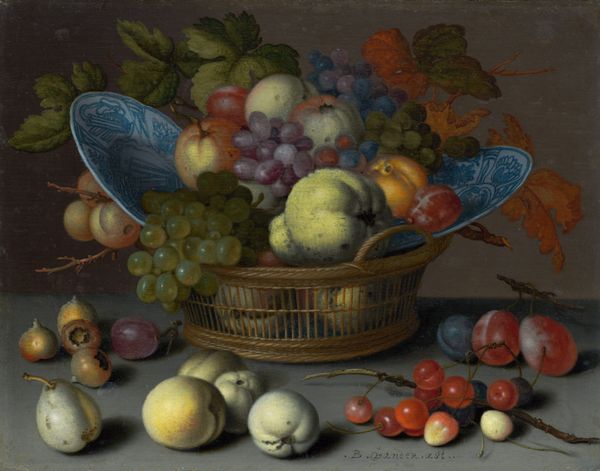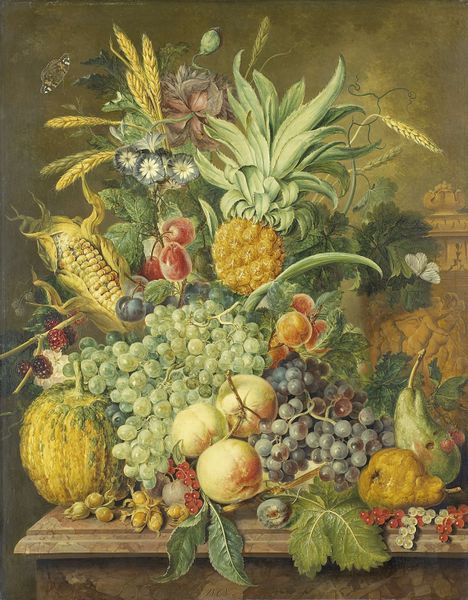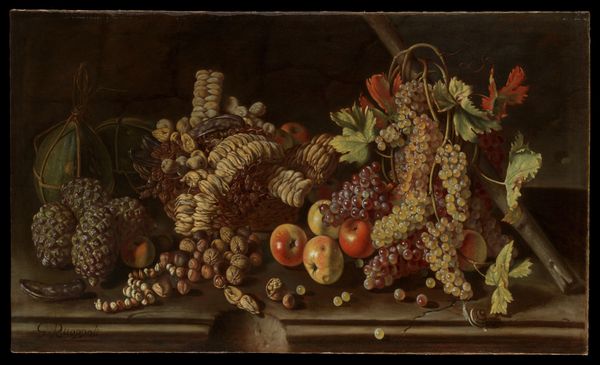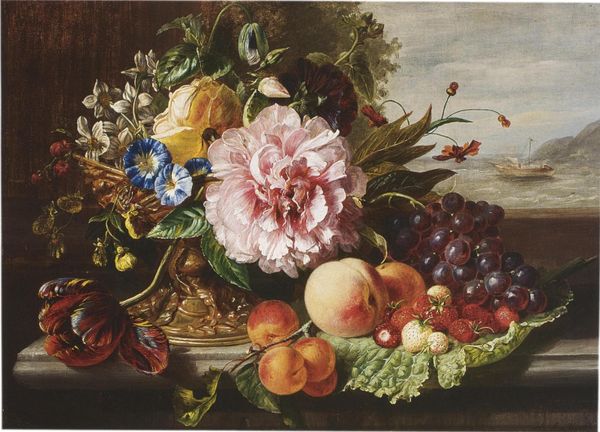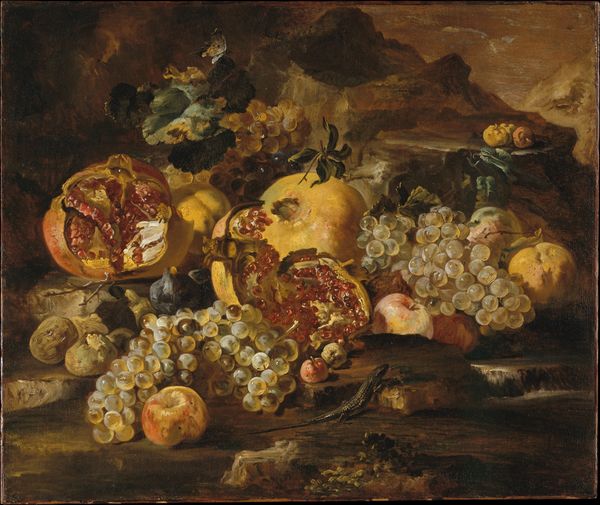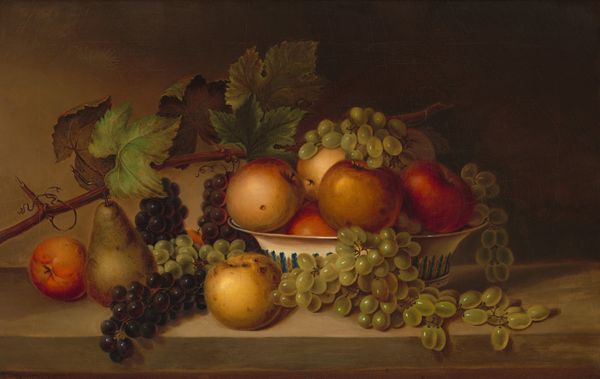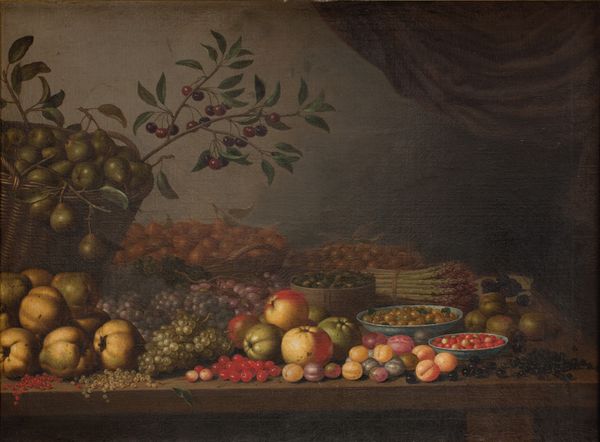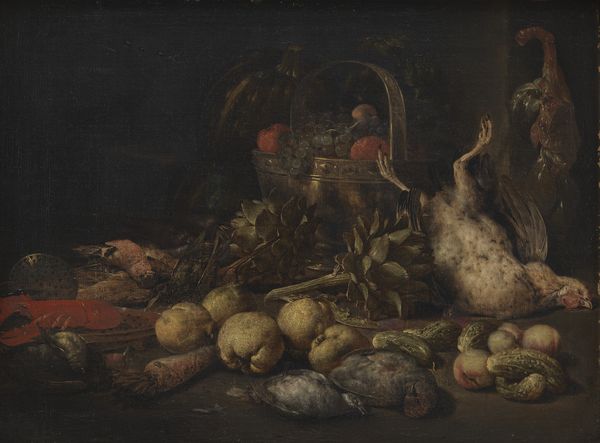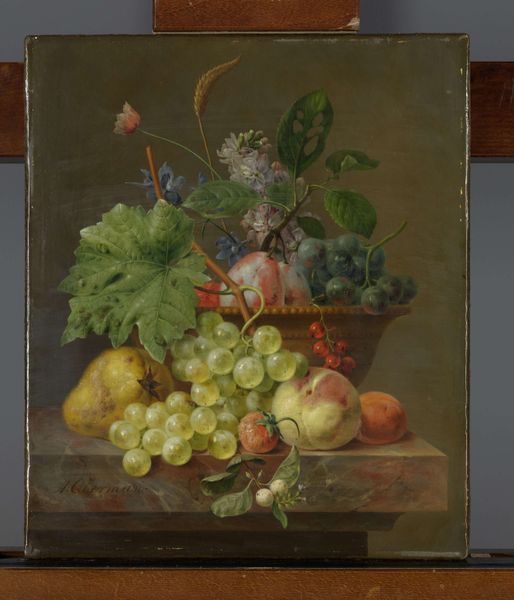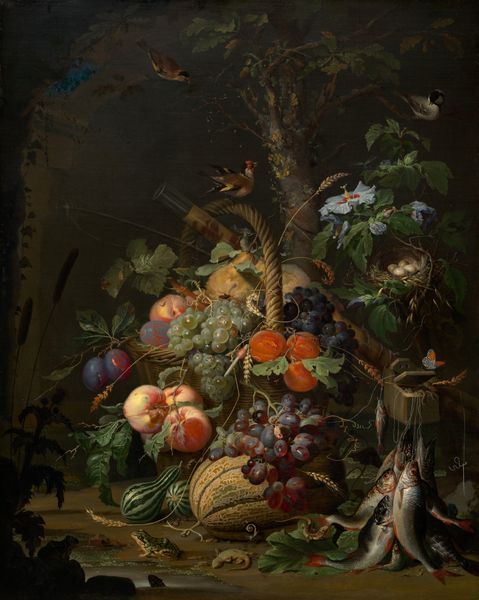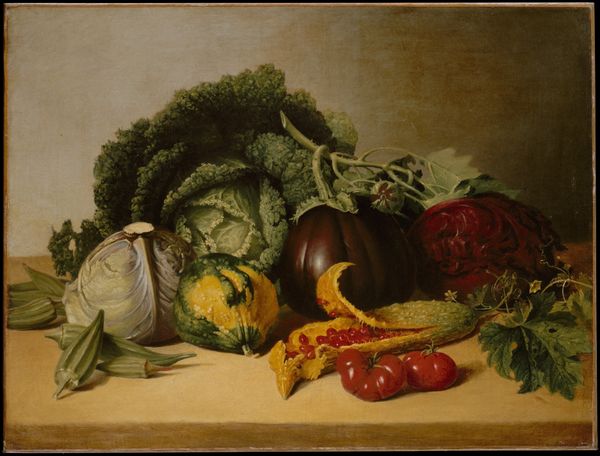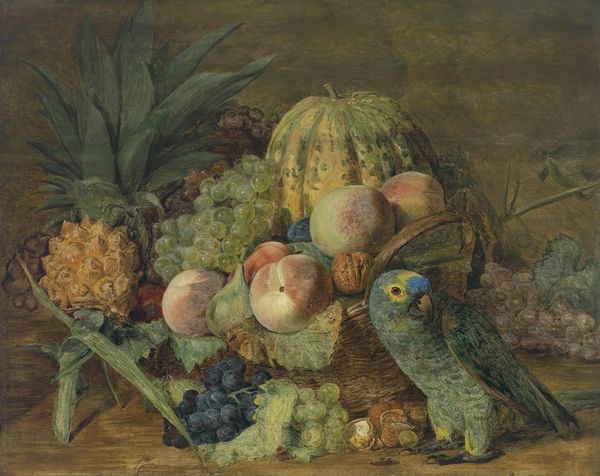
oil-paint
#
gouache
#
oil-paint
#
oil painting
#
fruit
#
romanticism
#
genre-painting
Dimensions: height 74.1 cm, width 92.8 cm, thickness 3.6 cm, depth 10.5 cm
Copyright: Rijks Museum: Open Domain
Elisabeth Hoopstad rendered this still life in oil paint, sometime in the first half of the 19th century. The artist has masterfully captured the textures of varied surfaces: the soft plumage of dead game birds, the gleam of plump grapes, and the polished wood of a hunting rifle. But let's consider these elements individually. Think about what was required to bring them together. The rifle, a new technology at the time, was fabricated by skilled artisans in a specialized workshop. The woven basket and leather bag were likely products of rural industry. And of course, the game itself was taken from the wild, a practice that has always had complex social implications. Hoopstad has assembled these disparate elements, prompting us to consider the relationships between nature, industry, and the leisure activities of the wealthy. The artistry lies not only in the painting itself, but in the arrangement of objects—a carefully constructed tableau that reflects the social and economic realities of its time.
Comments
No comments
Be the first to comment and join the conversation on the ultimate creative platform.
